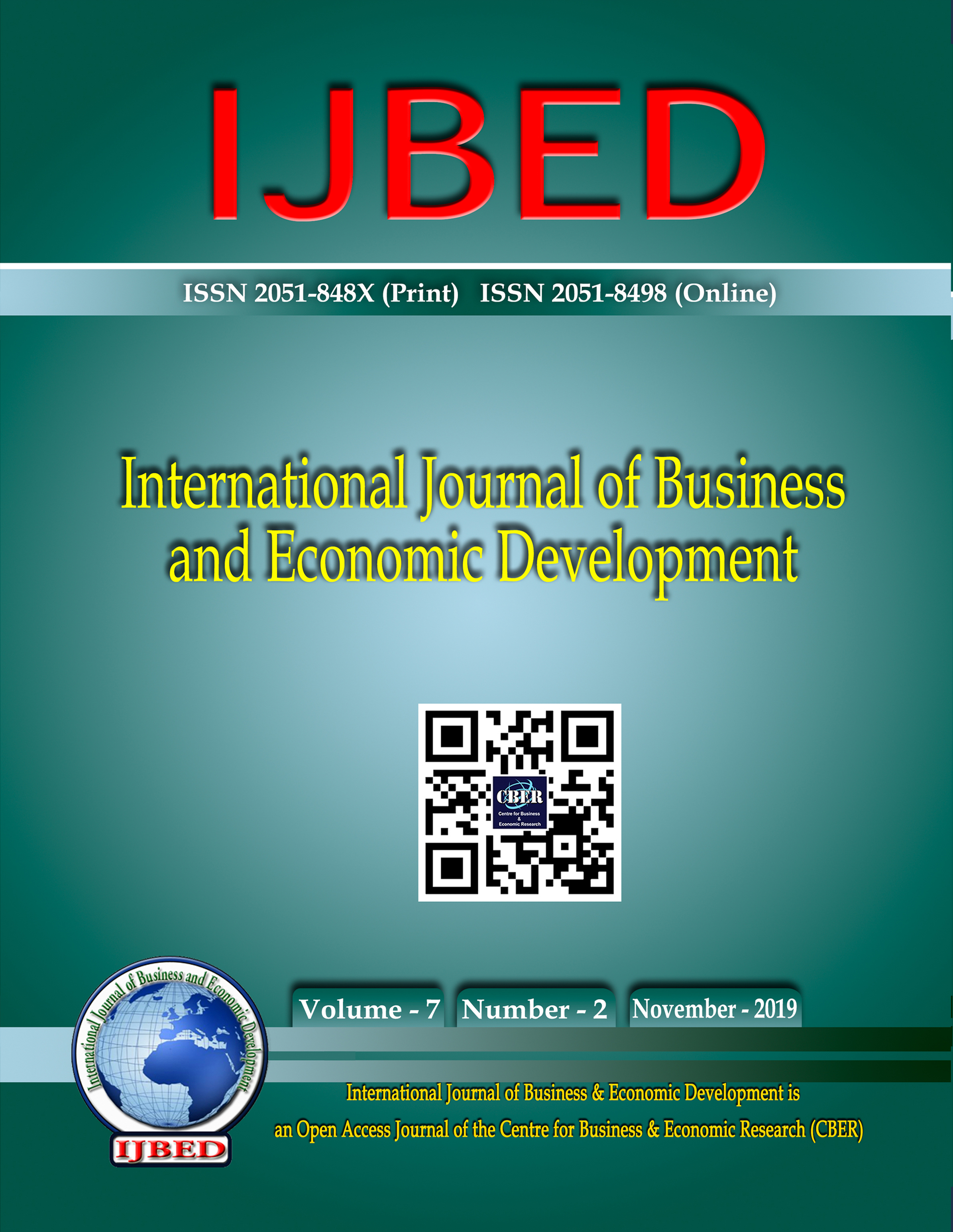Articles
Monetary policy and long-run share price reversals on the Johannesburg Securities Exchange
DOI: https://doi.org/10.24052/IJBED/V010N01/ART-01
-
Purpose: The study expounds on the phenomenon of long-run reversal and monetary policy in the financial markets. The study used Johannesburg Securities Exchange (JSE) data to determine whether the monetary policy changes implemented by the South African Reserve Bank impact long-run reversals in the JSE.
Context: Long-run share value reversals have occurred in various regional financial markets in the US, Europe, Asia, and South Africa. Long-run share value reversals occur when firms with poor past performance rebound and produce superior returns compared to firms with good historical past performance. South Africa has a monetary policy of inflation targeting, leading to upward lending rate adjustments whenever consumer inflation threatens to exceed 6%.
Methods: The regressions of the Fama-French three factors model and Fama-MacBeth model were used to estimate the relationship between the excess return of different portfolio returns and the Fama-French three factors. Furthermore, we split our sample under expansive and restrictive monetary conditions. We ran the regression of the Fama-MacBeth model again to see whether the monetary conditions will influence the long-run share price reversal.
Results: The sample results over the near 15-year sample period showed that firms with poor past performance failed to outperform those with past solid performance. The gap is closed under restrictive monetary conditions that tighten the liquidity conditions of an economy. In addition, monetary policy changes led to long-run reversals among poor performing firms.
Practical value: The study contributes to momentum theory. It is recommended that further research do a detailed examination of the relationship between firm characteristics and long-run reversals under various monetary conditions. Monetary conditions are worth watching for when constituting a portfolio because they create arbitrage opportunities for astute investors.
- View article
A critical examination of the importance of sustainability in the circular economy: UK perspective
DOI: https://doi.org/10.24052/IJBED/V010N01/ART-02
-
Purpose: The purpose of this research is to examine how the concept of sustainability might operate in a circular economy in order to contribute to economic growth
Design/methodology/approach: A quantitative survey questionnaire research strategy was utilised in conjunction with a deductive research approach to elicit information about the topic by referencing the most recent and pertinent literature. This study combines primary and secondary sources. To achieve the research objectives, primary data is acquired via questionnaires. Over a 20-day period, 30 companies representing a variety of industries were approached face to face, via email, and via LinkedIn.
Findings: According to the research findings, corporations are becoming increasingly aware of the circular economy and its implications for sustainability. The findings also revealed that businesses are eager to transition to a circular economy and believe there is a link between the two concepts.
Practical implications: The study provides a critical perspective on the current state of the circular economy and the importance of sustainability in the circular economy. The research goes beyond the scholarly community's efforts to improve knowledge of the circular economy and the relationship between sustainability and the circular economy.
Originality/value: This study contributes significantly to the scarcity of academic evidence on the relationship between the two concepts, and it is an important step toward a better understanding of how businesses can use circular economies to advance toward a more sustainable society.
- View article
The Sundarbans: Sustainable tourism, livelihoods and economies involving Bangladesh and India
DOI: https://doi.org/10.24052/IJBED/V010N01/ART-03
-
The Sundarbans, considered as the tourism heartland of South Asia and compared to Amazon rainforest for its expanse and biodiversity of flora and fauna spanning over 36,000 square kilometers, is currently at risk of massive depletion. The disaster can be avoided through sustainable tourism that minimizes negative social or environmental impacts and conserve fragile ecosystem consisting of flora and fauna and their habitats. This sustainable tourism can draw upon its basic tenets from the ‘’Sustainable Development Goals’’ propagated by World Tourism Organization. For both Bangladesh and India, it is obligatory under the remit of sustainable tourism to shift policy focus from growth to equity, thus, paving the way for strong institutions capability of regulating the tourism industry and distributing assets to facilitate ‘pro-poor growth’ policies and actions. As the current sustainable tourism debate is patchy, disjointed and often flawed with false assumptions and arguments the discourse on sustainable tourism of the Sundarbans needs to be oriented towards a thoroughbred scientific level, a systemic perspective and an interdisciplinary approach
- View article
Previous Issue
- Volume 13 Issue 01
- Volume 12 Issue 02
- Volume 12 Issue 01
- Volume 11 Issue 02
- Volume 11 Issue 01
- Volume 10 Issue 02
- Volume 10 Issue 01
- Volume 09 Issue 02
- Volume 09 Issue 01
- Volume 08 Issue 02
- Volume 07 Issue 02
- Volume 07 Issue 01
- Volume 06 Issue 3
- Volume 06 Issue 2
- Volume 06 Issue 1
- Volume 05 Issue 3
- Volume 05 Issue 2
- Volume 05 Issue 1
- Volume 04 Issue 3
- Volume 04 Issue 2
- Volume 04 Issue 1
- Volume 03 Issue 3
- Volume 03 Issue 2
- Volume 03 Issue 1
- Volume 02 Issue 3
- Volume 02 Issue 2
- Volume 02 Issue 1
- Volume 01 Issue 3
- Volume 01 Issue 2
- Volume 01 Issue 1



